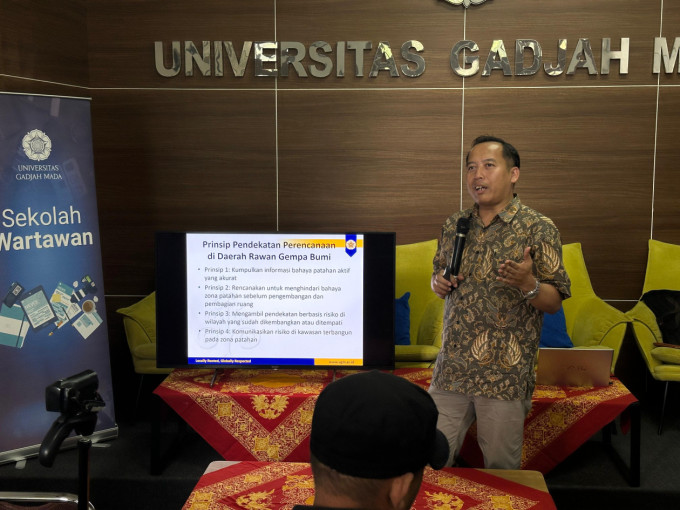
In recent years, Indonesia has witnessed a notable surge in earthquake activity. Meteorology, Climatology, and Geophysics Agency (BMKG) data reveal a consistent uptrend since 2013, with an annual average of 10,000 earthquakes.
Professor Wahyu Wilopo, a distinguished geology professor at UGM, attributes this surge to Indonesia’s strategic position in the Ring of Fire—the Pacific Ring of Fire—and the convergence of three major tectonic plates.
Addressing a Sekolah Wartawan class at UGM on Friday (Jan. 12), Professor Wilopo underscored Indonesia’s susceptibility to earthquakes due to its geographical location.
“Most of Indonesia’s territory is prone to earthquakes,” he said.
Given the substantial earthquake risk in the country, Professor Wilopo stresses the imperative need to fortify mitigation efforts to curb the impact of potential disasters.
Initial steps involve crafting spatial plans founded on comprehensive multi-hazard information, particularly centered around earthquakes.
Moreover, Professor Wilopo elaborated on four pivotal planning principles tailored for earthquake-prone regions: firstly, collecting data on active fault hazards accurately; secondly, planning strategically to sidestep fault zone hazards during development and spatial distribution; thirdly, adopting a risk-centric approach in developed or occupied areas; lastly, communicating risks within built-up zones situated in fault-prone areas.
“For inhabited areas, there is a pressing need for building reinforcement, heightened resilience, and community preparedness,” he asserted.
Professor Wilopo stressed the indispensable requirement for seamless collaboration between the government, communities, private sector, academia, and mass media in disaster mitigation. This holistic partnership aims to fortify community resilience in the face of potential disasters.
Author: Ika
Photographer: Firsto

